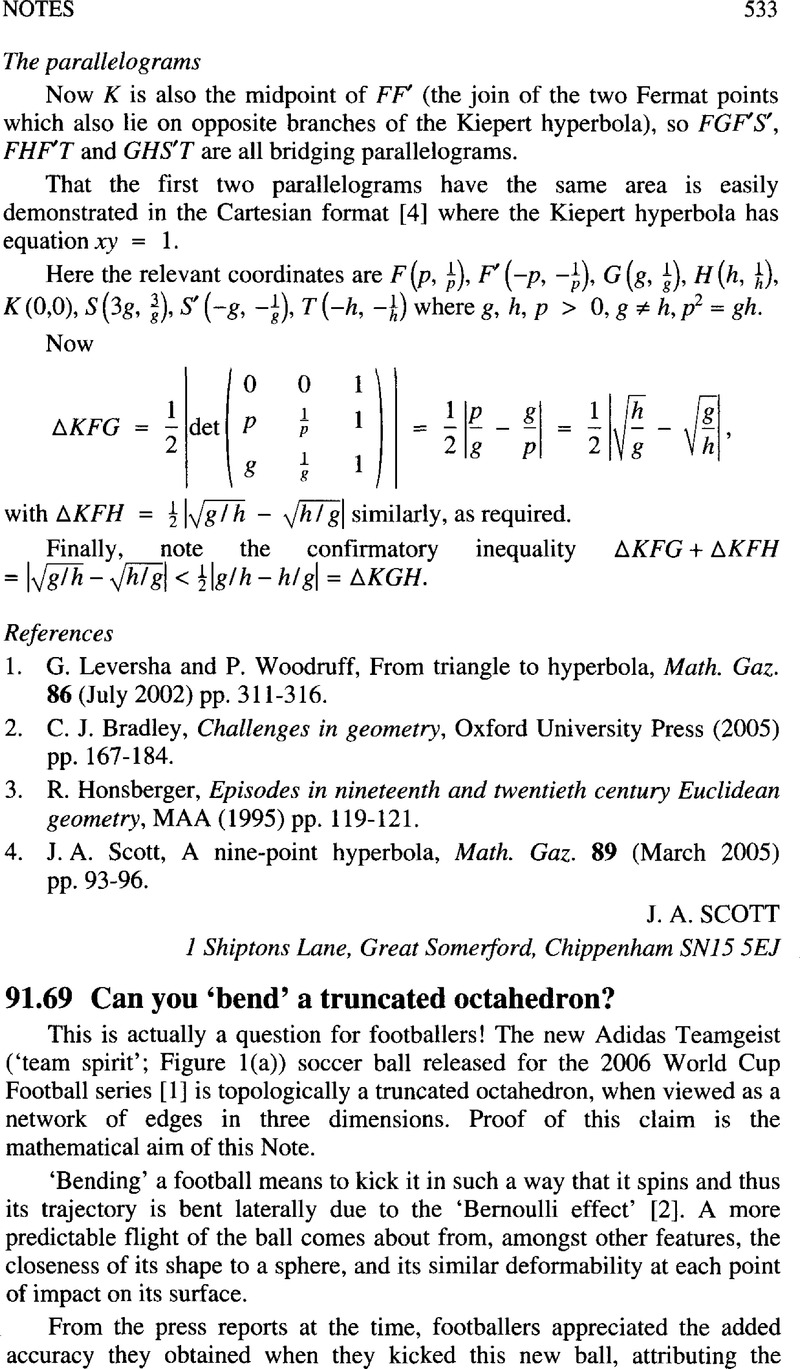Crossref Citations
This article has been cited by the following publications. This list is generated based on data provided by Crossref.
Kuchel, Philip W.
2008.
92.81 10n2 +2 revealed.
The Mathematical Gazette,
Vol. 92,
Issue. 525,
p.
546.
Kuchel, Philip W.
2012.
96.45 Can you ‘bend’ a truncated truncated tetrahedron?.
The Mathematical Gazette,
Vol. 96,
Issue. 536,
p.
317.
Kuchel, Philip W.
2015.
99.23 Kicking a cube.
The Mathematical Gazette,
Vol. 99,
Issue. 545,
p.
346.


